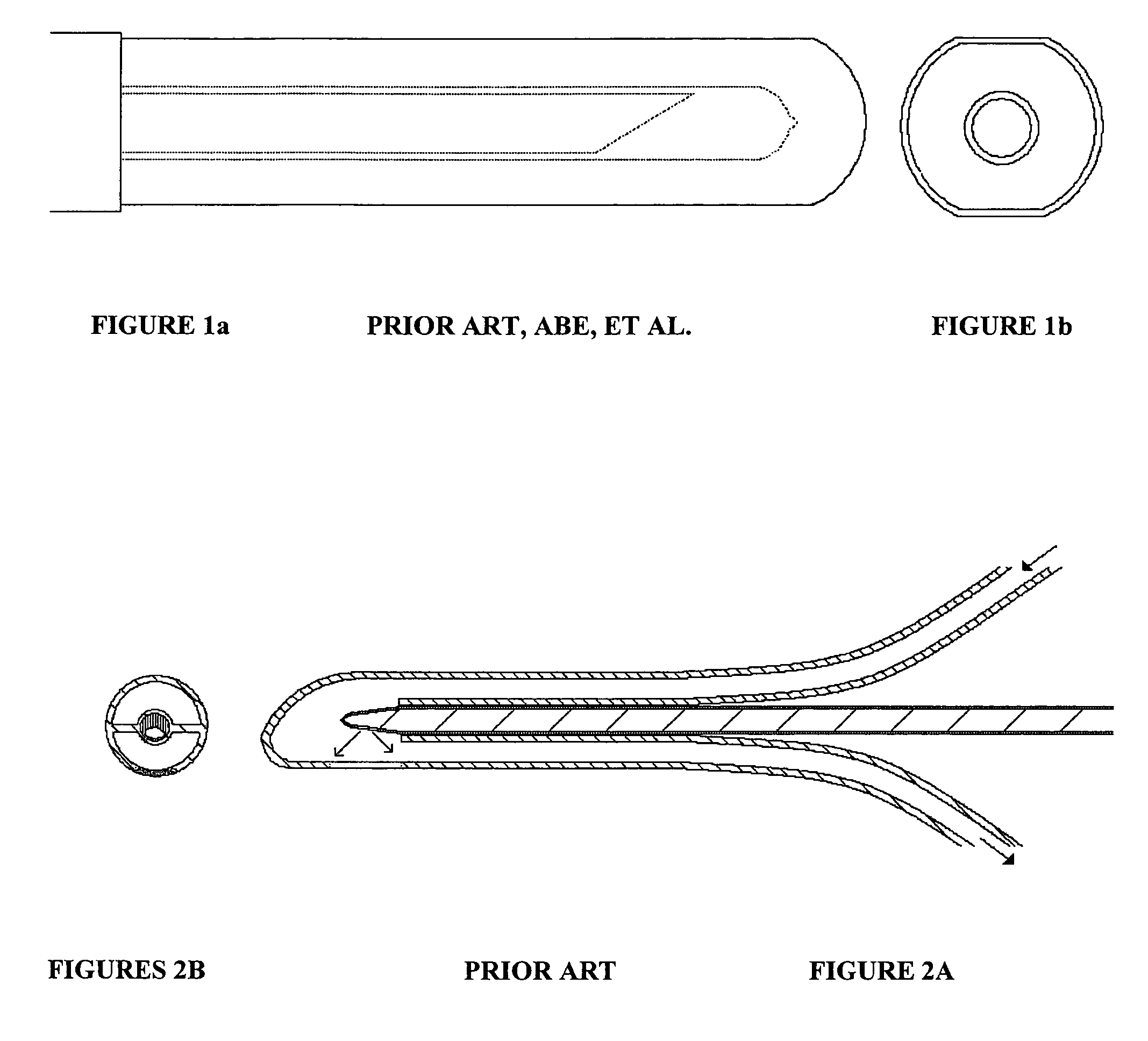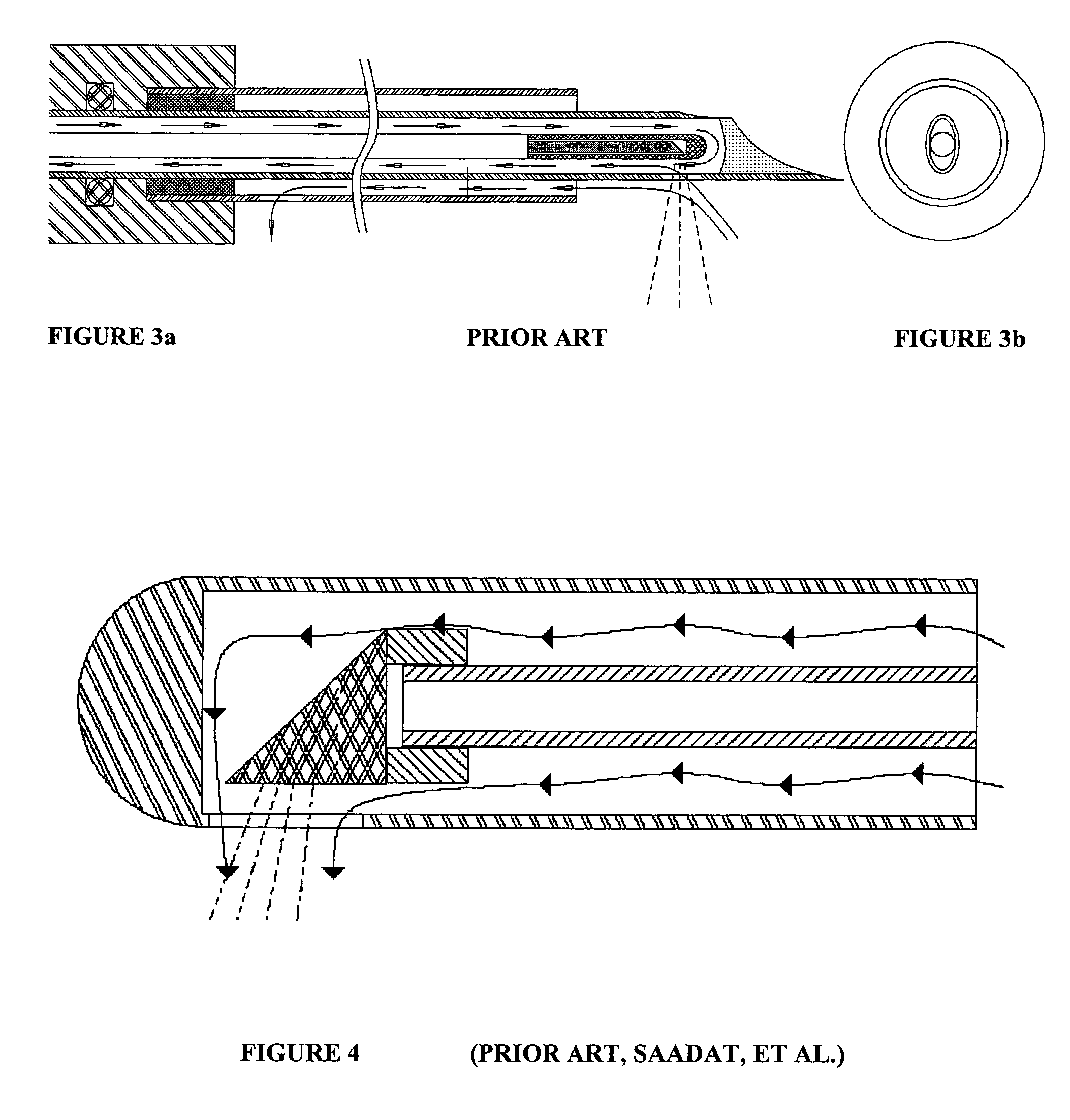Lateral laser fiber for high average power and peak pulse energy
a laser fiber and pulse energy technology, applied in the field of endosurgery laser applications, to achieve the effect of improving the energy density of target tissue, improving the energy density of aiming laser at target, and enhancing orientation
- Summary
- Abstract
- Description
- Claims
- Application Information
AI Technical Summary
Benefits of technology
Problems solved by technology
Method used
Image
Examples
Embodiment Construction
[0088]The present invention provides an improved optical fiber tip for laterally directing a laser beam. The present invention comprises a waveguide, such as an optical fiber, having a specialized output tip. Electromagnetic radiation is coupled into the waveguide and propagates in a propagation direction along the waveguide to the output tip (also known as working tip and distal tip, the energy source end of the waveguide being proximal), also referred to by surgeons as the “crystal” (a misnomer). The output tip includes a tissue contacting surface, preferably a substantially homogeneous transmission medium, with respect to refractive index, and a reflecting surface. The reflecting surface is disposed at an angle off normal to the propagation axis so that electromagnetic radiation is internally reflected in a lateral direction relative to the propagation direction, preferably through the substantially homogeneous transmitting medium toward a particular area on the tissue contacting...
PUM
 Login to View More
Login to View More Abstract
Description
Claims
Application Information
 Login to View More
Login to View More - R&D
- Intellectual Property
- Life Sciences
- Materials
- Tech Scout
- Unparalleled Data Quality
- Higher Quality Content
- 60% Fewer Hallucinations
Browse by: Latest US Patents, China's latest patents, Technical Efficacy Thesaurus, Application Domain, Technology Topic, Popular Technical Reports.
© 2025 PatSnap. All rights reserved.Legal|Privacy policy|Modern Slavery Act Transparency Statement|Sitemap|About US| Contact US: help@patsnap.com



